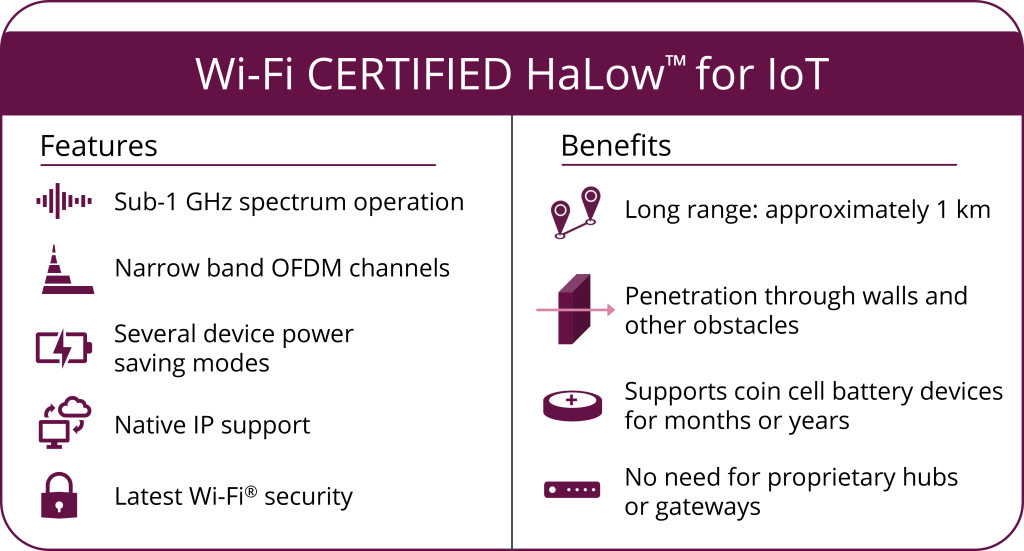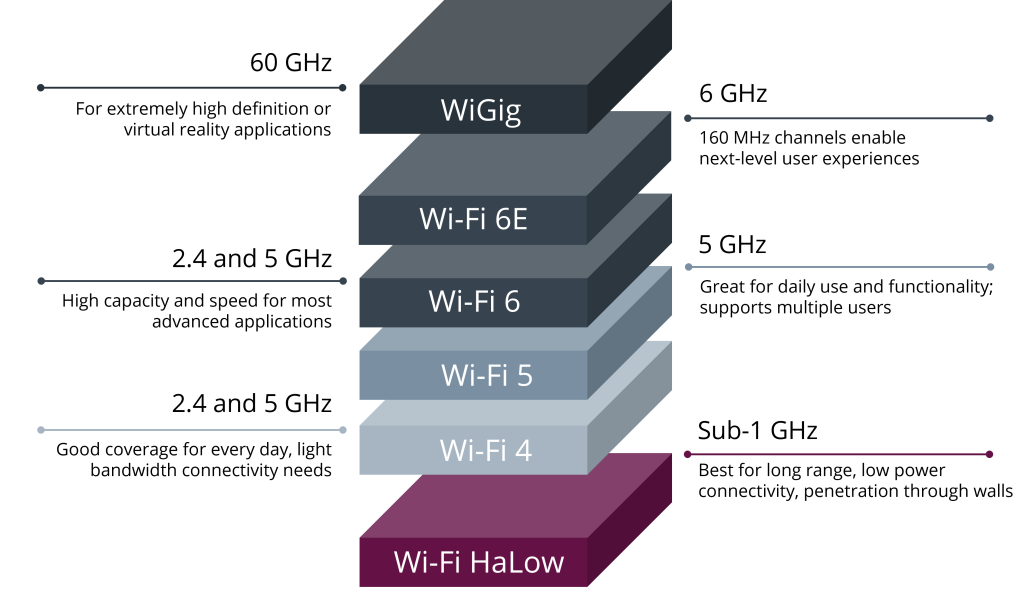Long range, low power Wi-Fi® for IoT
The wireless security camera market has experienced significant growth in recent years, driving demand for both commercial and consumer cameras. In fact, the global video surveillance market is expected to grow from $45.5 billion to $74.6 billion by 2025. The surge in demand can be attributed to concerns over public safety and security, the growing adoption of IP cameras, and increased interest in wireless and spy cameras.
As a result of this growth, Wi-Fi cameras have simplified the deployment and setup of video surveillance systems. However, traditional Wi-Fi technology may not be sufficient for certain needs. To reach farther distances, penetrate obstacles better, and operate longer on batteries without adding substantial cost and complexity to the network, a new type of Wi-Fi is required.
Enter “Wi-Fi HaLow”, a standardized low power, long-range wireless standard named by the Wi-Fi Alliance and formally known as IEEE 802.11ah. Unlike traditional Wi-Fi, which operates on the congested 2.4 GHz band or the shorter reach 5 GHz and 6 GHz bands, Wi-Fi HaLow operates in the license-exempt sub-1 GHz radio frequency range, making it ideal for long-distance applications.

Consumers expect their wireless cameras to work out-of-the-box, but every building has a unique layout, with walls and objects that can cause reflections or absorption of signals. The distance from the camera to the Wi-Fi router can also impact bandwidth and clear picture quality, and there is no guarantee that sufficient Wi-Fi coverage inside the home will extend beyond brick, stone, or stucco walls where security cameras may need to be placed.
To address these challenges, manufacturers often must provide power supplies or bigger batteries, as well as additional proprietary repeater or hub boxes to relay the signal, adding to the cost and complexity of the setup. However, with Wi-Fi HaLow, long-range and low-power wireless technology, all of these challenges can be easily addressed, without adding to the cost or complexity of the network.

In addition to its longer range capabilities, Wi-Fi HaLow also operates using narrower channels compared to traditional Wi-Fi, making it even more efficient at transmitting data. This powerful combination allows Wi-Fi HaLow to transmit data up to 10 times farther than conventional Wi-Fi at the same power level. As a result, Wi-Fi HaLow-enabled cameras can send video even in locations where traditional Wi-Fi cameras fail to maintain a connection.
Moreover, Wi-Fi HaLow’s use of sub-1 GHz bands provides a natural advantage in penetrating through solid objects and building materials better than the higher frequency bands used by traditional Wi-Fi. This results in more reliable connections between the camera and access point, regardless of the floor plan or building architecture. Additionally, outdoor applications are also less susceptible to the effects of precipitation. In contrast, traditional Wi-Fi’s 2.4 GHz frequency is easily absorbed by objects and liquids, which can lead to weaker connections and more dropped signals. It is for this reason that microwave ovens also use the 2.4 GHz frequency to heat food.
With the increasing demand for wireless devices in the IoT era, power consumption has become a critical consideration. Unlike traditional Wi-Fi, Wi-Fi HaLow offers power-saving modes that reduce energy consumption, making it a more efficient solution for wireless cameras.
Thanks to these low power requirements, Wi-Fi HaLow can extend the battery life of wireless cameras by 10 to 200 times longer than traditional Wi-Fi, depending on usage. Additionally, when a device is closer to the access point, Wi-Fi HaLow automatically works at faster, more energy-efficient data rates, further improving battery life.
One significant challenge faced by traditional wireless cameras is staying associated with their access point. To maintain the connection, the camera typically wakes up three times per second, leading to high power consumption. If the camera fails to remain connected, it becomes disassociated from the access point and must go through a lengthy re-association procedure when it wakes up, consuming even more energy. With Wi-Fi HaLow’s longer range and improved reliability, the camera can stay associated with the access point without the need for frequent wake-ups, further reducing power consumption.
As the IoT continues to grow, traditional Wi-Fi’s limitations have become increasingly apparent. Wi-Fi HaLow fills these technological gaps and provides a more efficient solution for the connected world we live in.


